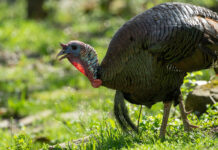SPRINGFIELD, Mo. — In years past, coffee was classified as an unhealthy beverage.
But, over 19,000 different coffee studies in recent decades have helped to change the perception of this drink according to Dr. Pam Duitsman, nutrition and health education specialist with the University of Missouri Extension.
“The good news is that current research shows that, for most of us, drinking one to five cups of the black version of coffee is considered safe, and even beneficial for health,” said Duitsman. “There are four times more antioxidants in coffee than tea.”
The many health-promoting phytonutrients in coffee have been shown to boost immune function, reduce inflammation, and lower rates of heart disease, stroke, diabetes, gallstones and certain cancers.
Reduction in depression and a protective effect on brain function have been associated with coffee intake, as well as a possible link to protection from Parkinson’s disease.
“Although no one understands the mechanisms of health promotion for certain, researchers have observed lower levels of inflammatory markers in coffee drinkers, which may explain their reduced risk for many chronic diseases,” said Duitsman.
America’s favorite
No matter what you call it — java, joe or coffee — it is America’s morning beverage of choice.
Over half of Americans age 18 and older drink coffee every day, and the vast majority (close to 70 percent) consume their drink in the first hour of their day.
Most coffee drinkers guzzle around three cups per day, and prefer cream and sugar, although about one third prefer their coffee black.
Specialty coffee beverages have become popular, ranging from espressos, lattes, cappuccinos, mochas, chai tea lattes and frappes.
This is very different from the 1970s when there was very little diversity, and most coffees in grocers came in cans.
Now, coffees are a diverse product and derive their value from where they are grown, characteristics of the bean, and how they are processed and roasted.
Origin of coffee
Coffee comes from the genus of flowering plants Coffea, which produces coffee beans on shrubs or small trees.
There are dozens of species, but only three of them are routinely used for making coffee: Arabica, Robusta and Liberica.
Arabica constitutes most of the world’s coffee, though Robusta is added to some high-quality espresso blends.
Each species and cultivar has its unique qualities and characteristics. Soil, climate, shade, sun, the age of the coffee plant, harvest method, processing, shipping, storage, date of processing, all have profound effects on the taste.
Coffee aficionados will also have their favorite way of brewing the beverage. This can range from drip, pour over, French press, siphon pot, percolator, soft brew, vacuum, Aeropress, French press, Chemex and others.
“All of these differences have created a coffee culture that leaves some of us a bit confused, and can make ordering a cup of coffee complicated,” said Duitsman. “But no matter which bean or brew you choose, here are a few important things to keep in mind when it comes to nutrition.”
Beware of calories
An eight-ounce cup of brewed coffee can have anywhere from 90-200 mg of caffeine (depending on the brew), which may be a concern for some.
“If you are drinking too much, your body will likely let you know when you begin having insomnia, tremors or increased heart rate,” said Duitsman.
Check with your doctor if you are pregnant, have a heart condition or other health conditions. You may be advised to limit coffee intake.
“Keep in mind that specialty coffee beverages can be high in sugar, fat and calories. Try making these a special treat, use skim or low-fat milk, and smaller amounts of sweetener,” said Duitsman.













